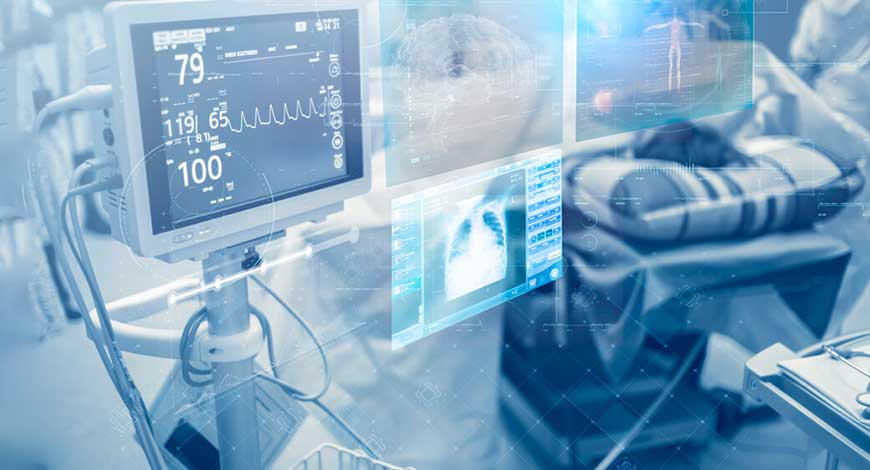Trends
Medical device service landscape hitting pivotal shift

Service and repair teams play an indispensable role in ensuring medical excellence, serving as the backbone of healthcare institutions. These dedicated professionals are responsible for installing, servicing, and repairing the sophisticated equipment that is crucial for accurate diagnosis, effective treatment, and lifesaving procedures. Their expertise ensures that medical devices operate at peak performance, minimizing downtime, and maximizing patient safety.
Their behind-the-scenes efforts enable healthcare professionals to provide the best possible outcomes for patients. According to Aquant’s 2024 Medical Device Field Service Benchmark Report, the medical device service landscape is hitting a pivotal shift this year, and it is all thanks to cutting-edge technologies and innovative strategies. Aquant’s report analyzes the workings of over 50 organizations and unpacks the challenges and victories of both lab and patient-facing medical device service organizations.
Current state of the market
The medical device market has experienced significant global growth in recent years—primarily driven by advancements in healthcare technology, an aging population, and the increasing prevalence of chronic diseases. The future of the global medical device market is overwhelmingly positive, fueled by investments in healthcare infrastructure, research and development, and the integration of digital technology.
However, this growth is coupled with some tough hurdles. From tangled supply chains to the headache of rising service costs, and not to mention the skill shortages looming on the horizon, the industry is in a tight spot. Yet, there’s a silver lining. Companies are finding their footing by leaning into technologies like Generative AI and strategic approaches such as Shift Left, setting the stage for a more streamlined, cost-effective future.
Dissecting the data: Lab gadgets vs. patient care tech
The report slices the data into two segments: organizations that service devices for the lab and those for patient care, revealing distinct challenges and successes in each area.
Patient care technology: The frontline of service demands
For devices in patient care, it is a daily battleground. These technologies face an intense usage cycle, demanding not just more maintenance but a sharper set of skills from technicians. The stakes are high with every service call, where a delay or a misstep can significantly affect patient care. This segment faces a stark reality: a stronger skills gap and the additional challenge of maintaining connectivity in complex hospital environments.
Lab equipment: A different kind of pressure
On the flip side, lab equipment companies are showing us a different picture. They boast better first-time fix rates, thanks to less complex device designs and more straightforward service processes. However, they’re not without their own set of challenges, notably in achieving efficient resolutions to service calls. The concept of Shift Left—moving towards solving problems remotely—is emerging as a key strategy for these companies, pointing to a future where efficiency is king and the idea of going out to fix an issue in the field may become obsolete.
The bottom line: Cost and quality of service
The gap between the best and the rest in both segments is stark, revealing a significant opportunity for cost savings and performance improvements across the board. Here’s a closer look at the financial impact the skills gap can have on both organizations that service lab equipment and patient-facing equipment:
- In top medical device companies with lab technology, bottom performers cost 25% more than the highest. However, the lowest-performing organizations have the most expensive workforce gap, with their bottom performers costing 106% more than the top-performing employees.
- In medical device companies with patient-facing technologies, bottom performers at top companies cost 31% more than the highest performers. However, at bottom-performing companies, the lowest-performing employees can cost 94% more than the top performers.
By focusing on equipping every team member with the knowledge of their subject matter expertise – through AI-powered troubleshooting technology, companies can dramatically reduce their service costs and elevate the customer experience. Here’s a closer look at the cost savings service organizations can achieve by doing so:
If everyone had the knowledge and skills to perform like the top 20% of the workforce, service costs would be reduced by:
- As much as 18% across the medical device industry overall.
- As much as 16% in medical device organizations specializing in patient-facing technology.
- As much as 19% in medical device organizations specializing in laboratory equipment.
What’s on the Horizon?
Best-in-class medical device companies are leading the industry by focusing on a holistic approach to progress. They prioritize the development of soft skills and in-house technical expertise, understanding that the effectiveness of advanced technologies relies heavily on personnel adept in communication, problem-solving, and adaptability. By expanding in-house technical teams, these companies ensure a more personalized and immediate response to challenges, enhancing service quality and fostering stronger connections with healthcare providers.
Furthermore, these organizations take a proactive stance in embracing trends related to connectivity and adeptly navigate the intricacies of contemporary medical devices, which incorporate advanced systems like the Internet of Things (IoT), robotics, and wireless technologies. Prioritizing strategies such as the Shift Left approach and the use of AI for troubleshooting, they harness these advanced tools and methods to gain valuable insights, boost operational efficiency, elevate patient outcomes, and inform strategic planning. Medical Product Outsourcing














